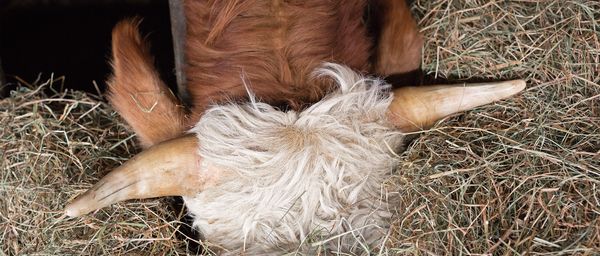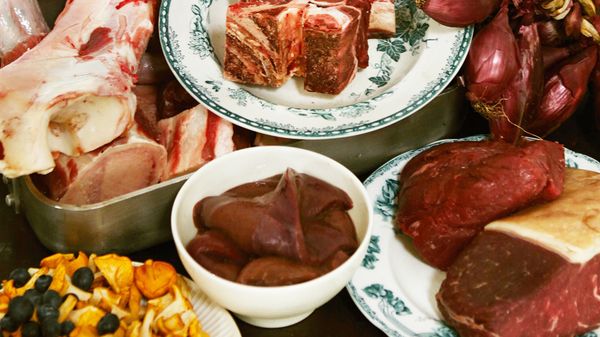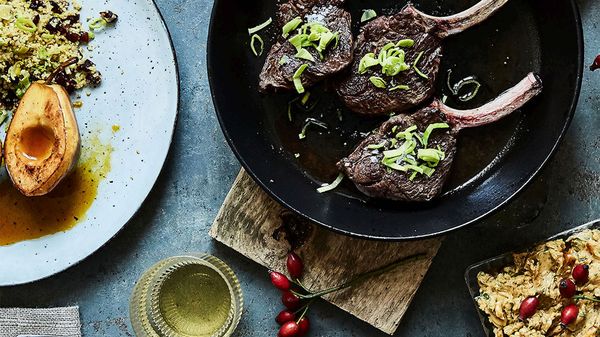
Located in the black forest Hof Gasswies is – quite simply – cow heaven on earth.
The animals are happy, the milk is healthy and everyone wants to know how farmers Siliva and Alfred Rutschmann manage it.

Some of them have horns
that protrude from the head and swing upwards towards the heavens before they turn back down towards their mouths. Others have horns that are broken off or twisted in an odd way. Each horn is as unique as a finger-print, as personal as a face. And most importantly, each horn is still there.
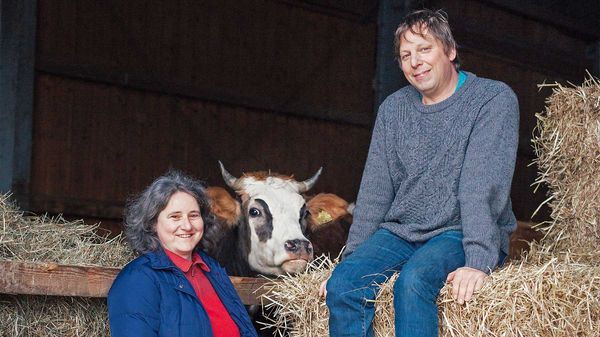
Alfred Rutschmann
– everyone calls him Fred – is the second baritone in the local choir in nearby Rechberg and, more than anything else, a passionate farmer. “If you ask kids about the first thing that comes to mind when they think of cows, they’ll say that they eat grass, have horns and stand out in the fields with their calves,” he says, counting off the various characteristics on the fingers of his hand. “And that,” he continues, nodding to himself as much as to anyone else, “is all you need.” In the shed behind him, you can hear the dairy cattle mooing – and the animals know what’s about to happen. They’re moving around as it’s just before seven in the morning and they’re about to be milked. The cow of a child’s imagination, though, has very little to do with reality: most don’t have horns, for a start, and they spend a lot of time in the cattle shed, getting a diet of concentrated feed and being separated from their calves one day after birth. The calves get a milk substitute to drink because, although they might be necessary for milk to be produced, they are also competing against human consumers.
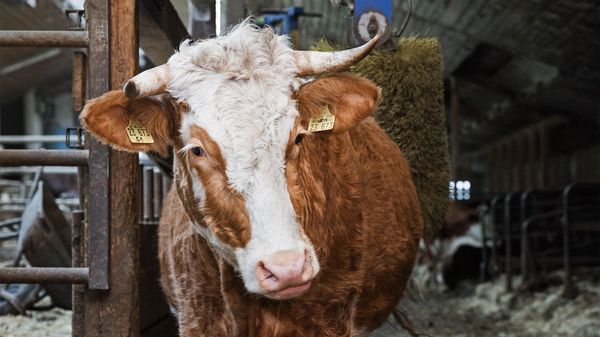
"We do things differently"
says Rutschmann. At Fred’s farm, Hof Gasswies in Klettgau-Rechberg, it’s the system that has to adapt to the animals and not the other way round. Fred and his wife Sylvia, a landscape architect, run an organic farm in the south-western reaches of the Black Forest; Switzerland is just a mile or so away.

It may be easy to forget it in conventional agriculture,
but cows' horns contain live flesh and bone, and are also connected to their foreheads and sinuses.
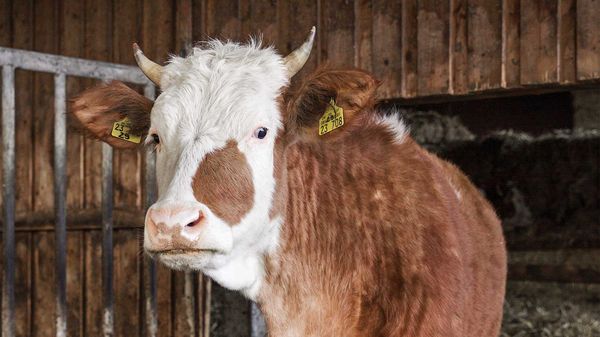
At Hof Gasswies, nature is the blueprint
For over ten years now, the Rutschmanns have been working on what is known as “mother-bonded and fostered calf rearing” – i.e. the calf is allowed to stay with its mother after birth and drink her milk; at first, all week long, and then every now and then for the next three months. The cattle sheds don’t have fixed by a grate, this is opened several times a day. Even when it’s closed, the animals can still see each other, smell, lick and muzzle one another. The cows are milked during this period, but not at the full level, leaving more than enough for the calves, who are then moved to foster mothers out at pasture, where they can continue to drink milk, but also get to eat grass.

This method of animal husbandry as applied on the Rutschmanns’ farm
is derived from natural bovine behavioural patterns. The same is true of breeding, too, with no artificial insemination: the bull is on hand to make sure that the pitter-patter of tiny hooves can be heard. This means that, in contrast to conventional farms, Hof Gasswies only gets calves in spring; left to their own devices, cows always calve early in the year. In winter, the pregnant cows are kept inside, warm and dry. Shortly before birth they stop giving milk and so get taken out of the roster.
Cows are true herbivores, meaning that they should really only eat grass. At Hof Gasswies, here's no question about the matter.

The cows get names to match their personalities
You might be surprised to find out that this way of raising their animals leaves the Rutschmanns in a grey area with regard to German law; for dairy farmers, it is still by and large based on paragraph one of the “Milk and Fats Act” enacted on 15th May 1931, which defines milk as “the product of a regular and full milking of the udder of one or more cows from one or more milkings, thoroughly mixed, with no additives and nothing removed.” Udders on Hof Grasswies aren’t milked regularly or fully, however, so the milk is not officially milk. Then again, they don’t call these things “grey areas” for nothing, and no-one checks to what extent the Rutschmanns stick to this provision and, as yet, no-one has tried to enforce it.
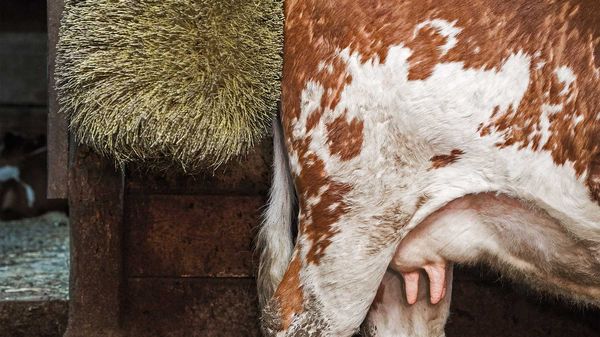
On a business level
the seasonal dip in milk production and the mother-calf bonding means that, although the cows do not need concentrated feed in the winter, the farm has its difficulties: the whole milk industry is geared towards continuous increases in production, so if you give the cows more time (for their calves), more space (for their horns) and a longer life (for their health and wellbeing), you get less milk. By way of comparison, one of the Rutschmanns’ cows yields an average of 3500 litres a year, while a specially-bred “turbovine” can easily produce 10,000 annually. What the milk prices don’t reflect is the impact this industrial farming has on the ecosystem, or, as Rutschmann puts it: “We’ve decided to invest in biodiversity rather than economic growth.”
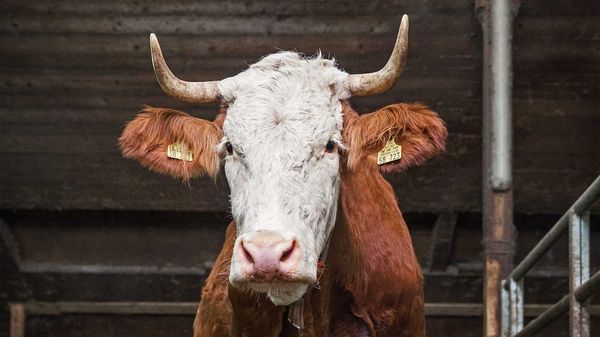
In conventional farming,
cows calve throughout the year, and the cattle need to deliver as much milk as possible in each and every month. For this to happen, grass has to be cut several times annually before it blooms so that its protein content remains high. This, however, doesn’t attract insects. When the Rutschmanns’ cows give birth in late spring and early summer, however, the best grass of the year is ready and waiting – just when the cow needs it. It doesn’t have to be continually mown because the animals only eat as much as they need; in turn, the grass is allowed to bloom, and that means more insects, more birds of song and fewer pests on the fruit orchards at Hof Gasswies.

So although the Rutschmanns aren’t actually doing much more than simply allowing nature to take its course,
they’ve been awarded several prizes for innovation. “That shows you the extent to which modern agriculture has lost its connection to nature,” says Rutschmann as he heads off into the milking parlour. Elli, 4 ½ years old and 1,750 pounds, is already waiting for him. She’s a Simmentaler Fleckvieh, a dual purpose breed which yields good milk and also produces meat. At Hof Gasswies, each of the 44 milk cows has a name and a character. There’s Julia, tough as old boots and 14 years old, while Marianne, aged eight, is noticeably strong-willed; Regina, seven, is easily scared, but Coco, three, couldn’t be more relaxed. And then there’s Elli, of course, who is just delightful.
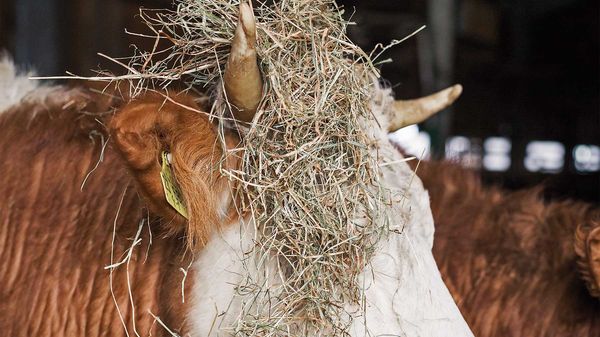
Happy cows, happy farmers
here,” says Sylvia Rutschmann. They get to follow their natural social behavioural patterns, suffer from less stress and – as a result – are ill less often. This keeps costs for vets down and also means that there is no need to buy supplementary fodder for calves. The milk on Rutschmanns’ farm has got just what the calves need and is given to them at a temperature their sensitive digestive systems can handle. Just as Sylvia is explaining things, there’s a rattling sound from the shed. Knowing exactly what it means, Sylvia stands up and – bread in hand – heads out to the shed: the cows are trying to open the gate to go out to pasture. When she gets there, it’s already half-open and, as she waves her arms like an aircraft marshal, the cows take a few steps back – only to come back towards her for a pat and a nuzzle.

BETWEEN MILKINGS, THE COWS GET A CHANCE TO RELAX
In a bath of hay, for example.
